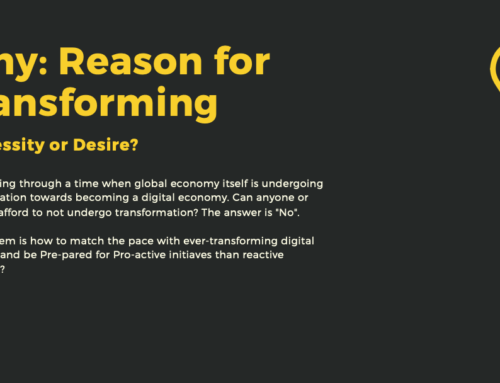 Thought to share few takeaway points with our fellow readers.
Thought to share few takeaway points with our fellow readers.
“Indeed, the whole nature of strategy making — dynamic, irregular, discontinuous, calling for groping, interactive processes with an emphasis on learning and synthesis — compels managers to favor intuition. This is probably why all those analytical techniques of planning felt so wrong. … Ultimately, the term “strategic planning” has proved to be an oxymoron.” –Henry Mintzberg
strategic planning arrived on the scene in the mid-1960s, corporate leaders embraced it as “the one best way” to devise and implement strategies that would enhance the competitiveness of each business unit. While certainly not dead, strategic planning has long since fallen from its pedestal. But even now, few people fully understand the reason: Strategic Planning is not Strategic Thinking. Indeed, strategic planning often spoils strategic thinking, causing managers to confuse real vision with the manipulation of numbers. And this confusion lies at the heart of the issue: the most successful strategies are visions, not plans.
When companies understand the difference between planning and strategic thinking, they can get back to what the strategy making process should be. Strategic planning isn’t strategic thinking. One is analysis, and the other is synthesis.
Planners should make their greatest contribution around the strategy-making process rather than inside it. They should act as catalysts that support strategy making and helping to specify the series of concrete steps needed to carry out the vision. The label “strategic planning” has been applied to all kinds of activities, such as going to an informal retreat in the mountains to talk about strategy. But call that activity planning, let conventional planners organize it, and watch how quickly the event becomes formalized. Strategic thinking, in contrast, is about synthesis. It involves intuition and creativity. Such strategies often cannot be developed on schedule and immaculately conceived.
Real strategic change requires inventing new categories, not rearranging old ones.
Strategy making needs to function beyond the boxes (Diagram, Framework), to encourage the informal learning that produces new perspectives and new combinations. As the saying goes, life is larger than our categories. The problem is that planning represents a calculating style of management, not a committing style. Managers with a committing style engage people in a journey. The very purpose of those who promote conventional strategic planning is to reduce the power of management over strategy making.
George Steiner declared, “If an organization is managed by intuitive geniuses there is no need for formal strategic planning. But how many organizations are so blessed? And, if they are, how many times are intuitive correct in their judgements?
The Fallacies of Strategic Planning
Because analysis encompasses synthesis, strategic planning is strategy making. This fallacy itself rests on three fallacious assumptions: that prediction is possible, that strategists can be detached from the subjects of their strategies, and, above all, that the strategy making process can be formalized.
According to the premises of strategic planning, the world is supposed to hold still while a plan is being developed and they stay on the predicted course while that plan is being implemented.
Innovation has never been institutionalized. Systems have never been able to reproduce the synthesis created by the genius entrepreneur or even the ordinary competent strategist, and they likely never will.
Where in the planning literature is there a shred of evidence that anyone has bothered to find out how managers make strategies? Instead many practitioners and theorists have wrongly assumed that strategic planning, strategic thinking and strategy making are all synonymous, at least in best practice.
Strategy making is an immensely complex process, which involves the most sophisticated, subtle, and, at times, subconscious elements of human thinking. Real strategists get their hands dirty digging for ideas and real strategies are built from the nuggets they uncover.
The failure of strategic planning is the failure of systems to do better than, or even nearly as well, human beings. If vision is unavailable to those who can’t see with their own eyes then it’s also unavailable to those who aren’t ready to see it through another person’s eyes, all to be in their self proclaimed role.
 Sometimes strategies must be left as broad visions, not precisely articulated, to adapt to a changing environment. Planning can’t generate strategies. But given viable strategies, it can program them, it can make them operational.
Sometimes strategies must be left as broad visions, not precisely articulated, to adapt to a changing environment. Planning can’t generate strategies. But given viable strategies, it can program them, it can make them operational.
May be this is why we, at 366pi Consulting, have named our service as “Strategy & Planning” and not “Strategic Planning”. Thank You.
Disclaimer: The following article is a work of “Henry Mintzberg”, and could also be found in his book “The Rise & Fall of Strategic Planning”. The following article also appeared in HBR (Harvard Business Review) by the same title. From Henry Mintzberg, The Rise and Fall of Strategic Planning, Free Press: 1994, pp. 318-321








What are the components of a great strategic plan?…
> Either you can design key strategies or decide planning components. “Indeed, the whole nature of strategy making — dynamic, irregular, discontinuous, calling for groping, interactive processes with an emphasis on learning and synthesis — compels mana…
Mistakes in strategic planning?…
According to the premises of strategic planning, the world is supposed to hold still while a plan is being developed and they stay on the predicted course while that plan is being implemented. Make sure you don’t end up Planning your Strategy than Str…